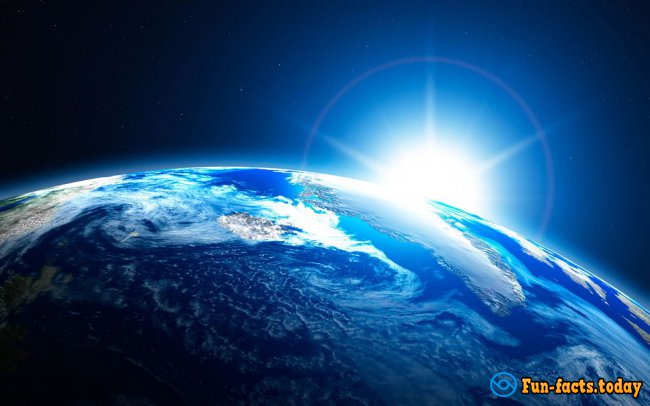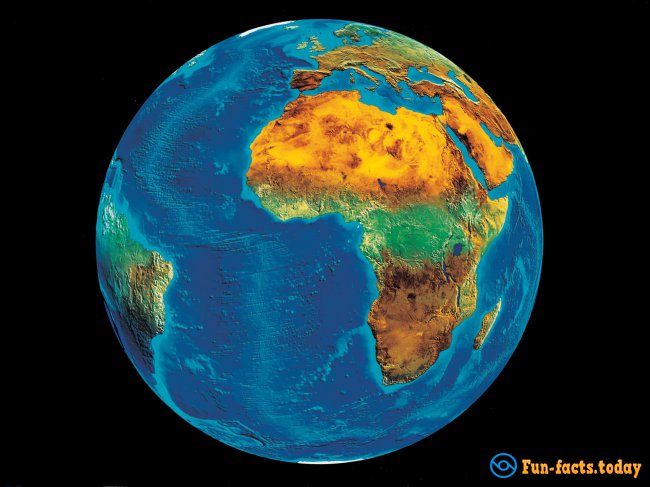The Earth is the third planet from the sun and is the biggest of the terrestrial planets. The Earth is the main planet in our solar system not named after a Roman theology. The Earth was formed approximately 4.54 billion years ago and is the main known planet that supports life. Here are some intriguing actualities about the Earth.
1. The Earth’s central Diameter is 12,756km.
2. Its Polar Diameter is 12,714 km.
3. Its mass is 5.97 x 10^24kg.
4. There is just a single regular satellite of the planet Earth. As a rate of the extent of the body it circles, the Moon is the biggest satellite of any planet in our solar system. In genuine terms, be that as it may, it is just the fifth biggest regular satellite; along these lines, the earth has just a single Moon.
5. Its Orbit Distance is 149,598,262 km.
6. Its Surface Temperature is – 88 to 58°C
7. The Earth was once accepted to be the middle of the universe yet because of the obvious developments of the Sun and planets in connection to their perspective, old researchers stated that the Earth stayed static, while other divine bodies went in roundabout circles around it. Inevitably, the view that the Sun was at the center point of the universe was hypothesized by Copernicus, however, this is additionally not the situation.
8. The Earth’s revolution is gradually abating. This deceleration is going on impalpably, at roughly 17 milliseconds for every hundred years, in spite of the fact that the rate at which it happens is not splendidly uniform. This has the impact of stretching our days; however, it happens so gradually that it could be as much as 140 million years before the length of a day will have expanded to 25 hours.
9. The Earth has two co-orbital satellites. They’re called 3753 Cruithne and 2002 AA29. 3753 Cruithne is 5 km crosswise over and at times called Earth’s second moon. It doesn’t in actuality encircle the Earth, yet has a corresponding circle with our home planet. It has a circle that makes it resemble it’s taking after the Earth in a circle, yet it’s really taking after its own, particular way around the Sun.
10. Earth doesn’t take 24 hours to turn on its pivot. It’s really 23 hours, 56 minutes and 4 seconds. This is the measure of the time it takes for the Earth to totally turn around its axis; space experts call this a sidereal day. That implies a day is 4 minutes shorter than we might suspect it is
11. The Earth is the main planet not named after a divine being. The other seven planets in the solar system are altogether named after Roman divine beings or goddesses. Although, just Mercury, Venus, Mars, Jupiter, and Saturn were named amid ancient times, since they were noticeable to the stripped eye, the Roman strategy for naming planets was held after the disclosure of Uranus and Neptune.
12. The Earth is not in reality round in shape, with certainty it is geoid. This essentially implies the adjusted shape has a slight lump towards the equator and this happens exclusively in light of the fact that the pivot of the Earth which causes the lump around the equator.
13. The Earth tilts at around 66 degrees.
14. Only 3% water of the earth is crisp, rest 97% salted. Of that 3%, more than 2% is solidified in ice sheets. That implies that 1% crisp water is found in lakes, waterways and underground.
15. Asia Continent is 30% of the aggregate earth land region, which symbolizes 60% of the total world populace.
16. The Earth is for the most part iron, oxygen, and silicon. If you could isolate the Earth out into heaps of material, you’d get13.9% magnesium, 15.1% silicon, 32.1 % iron and. 30.1% oxygen Obviously, the vast majority of this iron is down at the center of the Earth. If you get down and test the center, it would be 88% iron. 47% of the Earth’s outside layer comprises of oxygen.
17. The Earth is the densest planet in the Solar System. This shifts as indicated by the part of the planet; for instance, the metallic center is denser than the covering. The normal thickness of the Earth is roughly 5.52 grams for every cubic centimeter.
18. About 70% of the Earth’s surface is shrouded in water. At the point when space explorers first went into space, they glimpsed back at the Earth with human eyes amusingly and named our home the Blue Planet. Also, it’s nothing unexpected that 70% of our planet is secured with seas. The 30% left is the strong ground, transcending ocean level.
19. A year on Earth isn’t 365 days. It’s really 365.2564 days. It’s this additional .2564 days that makes the requirement for leap years. That is the reason we attach an additional day in February consistently detachable by 4.
20. The Earth has an effective magnetic field. This marvel is brought about by the nickel-press center of the planet, combined with its quick rotation. This field shields the Earth from the impacts of sunlight solar wind.












